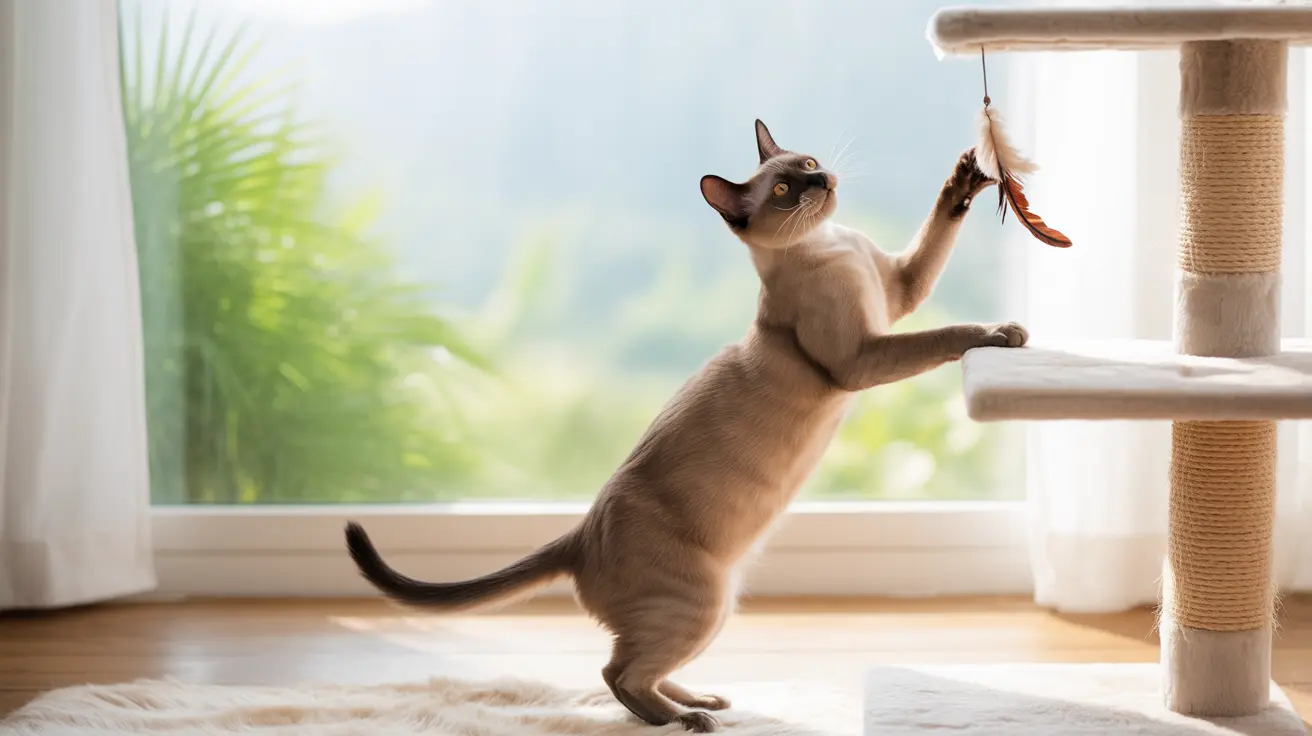The Burmese cat breed stands out as one of the most long-lived feline companions, with an impressive average lifespan that surpasses many other breeds. If you're considering adding a Burmese cat to your family or already share your home with one, understanding their potential longevity and how to maximize it is essential for providing the best possible care.
Recent studies, including comprehensive research from the Royal Veterinary College, have shown that Burmese cats boast the longest life expectancy among popular breeds, with an average of 14.43 years. This remarkable longevity, combined with their affectionate nature and intelligence, makes them exceptional family pets.
Average Lifespan of Burmese Cats
Typically, Burmese cats live between 10 to 16 years, though many exceed this range with proper care. Some exceptional cases have documented Burmese cats living up to 25 years or even longer. Female Burmese cats tend to have a slight advantage, living approximately 16 months longer than their male counterparts.
This impressive lifespan significantly outpaces the average domestic cat's life expectancy of 11.74 years, highlighting the breed's robust health and genetic advantages.
Key Factors Affecting Burmese Cat Longevity
Genetic Health
The genetic makeup of Burmese cats plays a crucial role in their longevity. Responsible breeding practices, including genetic testing for conditions like hypokalaemia and brachycephalic airway syndrome, help ensure healthier cats with longer life potential.
Environment and Lifestyle
Indoor living significantly increases a Burmese cat's lifespan by protecting them from outdoor hazards such as traffic, predators, and diseases. Indoor cats can live several years longer than their outdoor counterparts, with some reaching well into their twenties.
Nutrition and Weight Management
A balanced, high-protein diet tailored to your Burmese cat's life stage is crucial for maintaining optimal health. Avoiding excess carbohydrates and maintaining a healthy weight through proper portion control can prevent obesity-related health issues that might shorten their lifespan.
Health Considerations and Preventive Care
While generally healthy, Burmese cats can face certain breed-specific health challenges. Regular veterinary check-ups, preventive care, and early intervention when health issues arise are essential for maintaining their longevity. Some key areas to monitor include:
- Diabetes risk management
- Regular dental care
- Screening for genetic conditions
- Maintaining appropriate vaccination schedules
Creating an Optimal Living Environment
Burmese cats thrive in enriched environments that cater to their social and physical needs. Providing climbing structures, interactive toys, and regular play sessions helps maintain their mental and physical health, contributing to a longer, happier life.
Their strong social nature means they benefit from consistent human interaction and may do well with feline companions, reducing stress and promoting overall well-being.
Frequently Asked Questions
What is the average lifespan of a Burmese cat and how does it compare to other breeds?
Burmese cats typically live 10-16 years, with an average of 14.43 years, making them the longest-lived among popular breeds. This is significantly higher than the general domestic cat average of 11.74 years.
How can I help my Burmese cat live longer through diet and lifestyle choices?
Focus on a high-quality, protein-rich diet, maintain regular exercise through play, keep them indoors, and ensure regular veterinary check-ups. Mental stimulation and social interaction are also crucial for their longevity.
What common health issues affect Burmese cats and how do they impact their lifespan?
Common health issues include diabetes, hypokalaemia, and brachycephalic airway syndrome. Early detection and management through regular veterinary care can help minimize their impact on lifespan.
Does keeping a Burmese cat indoors increase its life expectancy?
Yes, indoor Burmese cats typically live longer as they're protected from outdoor dangers like accidents, diseases, and predators. Indoor cats can live several years longer than outdoor cats.
Why do female Burmese cats generally live longer than males?
Female Burmese cats live approximately 16 months longer than males on average, likely due to genetic and hormonal factors. This gender difference in longevity is consistent with many other cat breeds.
Conclusion
With proper care, attention to health needs, and a loving environment, Burmese cats can enjoy exceptionally long, healthy lives. Their impressive longevity, combined with their affectionate nature, makes them wonderful companions for those prepared to provide the care and attention they need to thrive.






